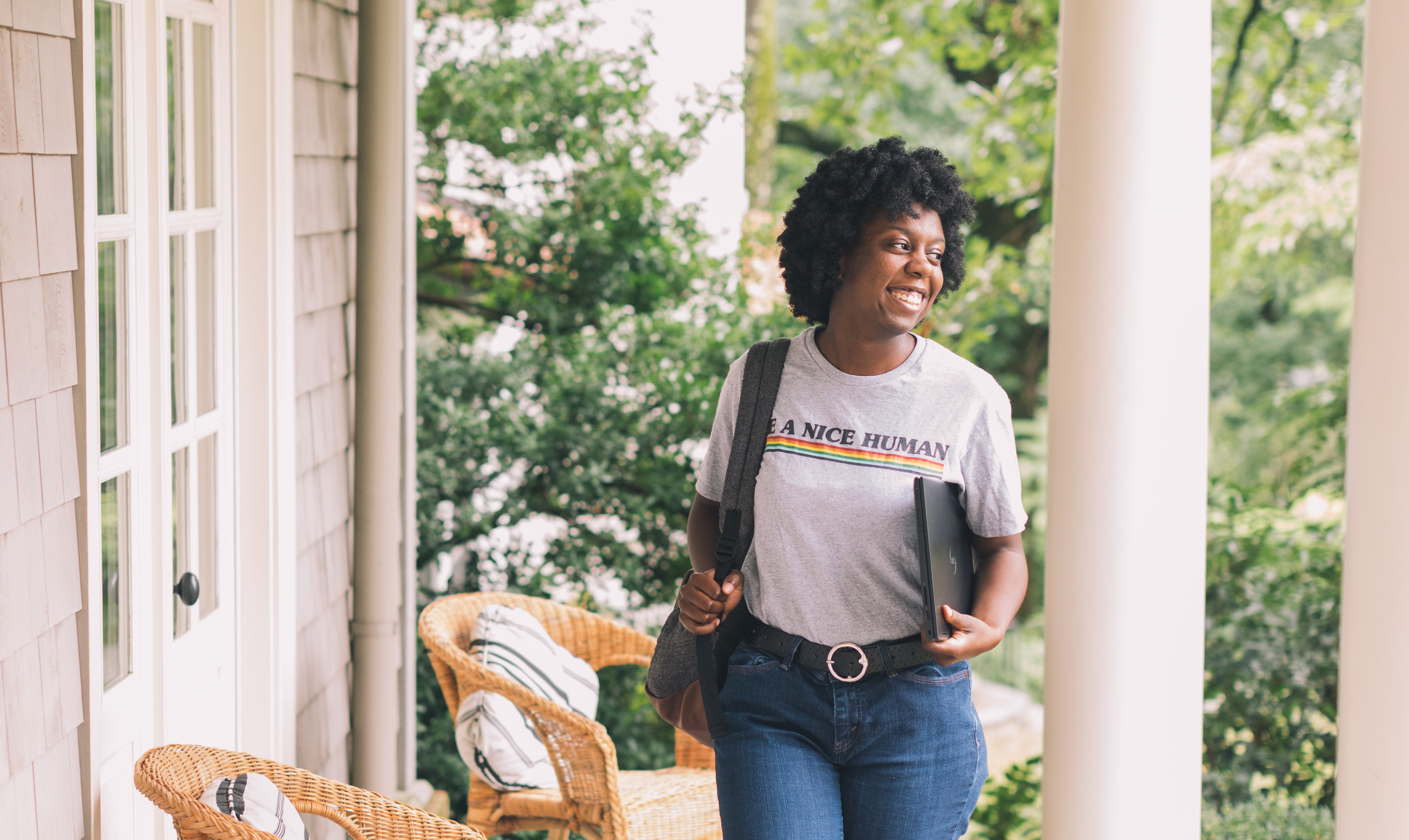Ca’Shawn Brown thrives in a classroom environment. The Georgia State University senior enjoys being able to ask her instructors questions in person and participate actively. She is also studying subjects with unique challenges for online learners; she is trying to complete a major in Applied Linguistics this year and a minor in Communication Disorders.
Brown started her college career with a love of learning languages and thought she might like to work at the United Nations. But once she started studying, she realized she had more of an interest in speech itself. As someone who had benefited from speech therapy as a child, she found herself interested in helping others with their speech, and she plans to be a speech pathologist working with children may not have access to clinics.
Before last spring, in the courses for her major, Brown met with professors in person to study specific sounds in phonetics and phonology, because it helps to see and hear the way the sounds are being made in person.
In the sudden shift to remote learning, her professor has had to develop a workaround to teach phonemes, holding the symbol of the phoneme in front of the camera so the class knows what she’s talking about.
“I definitely think it would be a slightly better experience in the classroom, but this phonetics class is my second major linguistics class,” she says. “If I hadn’t already studied linguistics in a previous semester, I don’t think I would be as successful as I am with this class.”
Brown previously shared her experience with digital learning for the Equity Equation campaign, and she expands on that here.
Managing the senior year workload
Except for one hybrid class, all of Brown’s classes at Georgia State are online this semester. Although she struggled during the initial transition to online learning in spring, she finds online classes give her more freedom to direct her learning and manage her own time.
“At this point, I might prefer it,” she says. “I can be on campus when I want to be. It’s on my terms. That’s really a benefit, because I like to plan out, down to the T, my week or my day.”
Brown designates days in her calendar for her five classes; she only does classwork for those classes on the days she’s marked out for them. This system works well (when professors upload assignments on time) because it keeps her attention focused on similar subjects. She schedules related classes — like grammar and phonetics — so that she does all the work for those classes on the same day.
“I like it because these classes all have something in common with one another,” she says. “We usually talk about variations of the same topics in those classes.”
Brown prefers the asynchronous model in courses with long meetings. She points to the Introduction to Audiology and Hearing Sciences class she took last year.
“It was a three-hour class, and it was a little bit later in the day” she says. “I could only pay attention for an hour and 30 minutes before I wanted to go home.”
This semester, Brown has another course with the same professor that uses recorded lectures, and that makes it easier for her to pay attention.
“I can pause her lecture so I can catch up and I can do it on my own time,” she says. “That’s a benefit of remote learning.”
Rethinking distance learning to include every student
Asked how colleges and instructors can make online learning more inclusive for every student, Brown was quick to point out that some students are on the wrong side of a technology gap. In some cases, she says, students might be sharing a laptop or lack other resources that they need in order to log in. Others aren’t as tech savvy. Other students are struggling with the online format itself.
“I think teachers need to understand that remote learning is not for every learner,” she says.
She encourages professors to think of online learning in a different way from classroom learning, and hopes some will consider adding elements like gamified content.
“If you throw in a Kahoot! game or a Jeopardy game, I promise you, that competitive aspect will get us to engage more,” she says. “Not only are you competing with other students, but you’re also competing with yourself and your knowledge.”
How remote learning affects future educational plans
Brown is planning to attend graduate school next year and is applying to programs for speech language pathology. With remote and asynchronous classes, instructors don’t know her as well as they would in a classroom setting, which she feels is an obstacle when it comes to getting letters of recommendation.
“Participating does pay off,” she says. “In college some teachers who see a student are like, ‘I’ve never seen this person before in my life.’ I don’t want to be that student, especially with a class that matters so much.”
Brown’s strategy has been to set up one-on-one meetings with instructors to discuss class material, and it has been working. She recently asked her psychology professor, with whom she is taking a course for the first time this year, for a recommendation, and got a yes.
Both of Brown’s roommates are in graduate programs at Georgia State now — attending classes remotely, of course — and as she observes their experiences, she has some concerns about next year. Some of their online classes, she says, are three hours long and synchronous. In case remote instruction continues in 2021, Brown is looking for courses with strong student and instructor engagement as well as a class structure designed to be effective in this format.
“I want to be able to stay engaged in my classes,” she says. “And I want real-world experiences, especially going into my field of study.”


